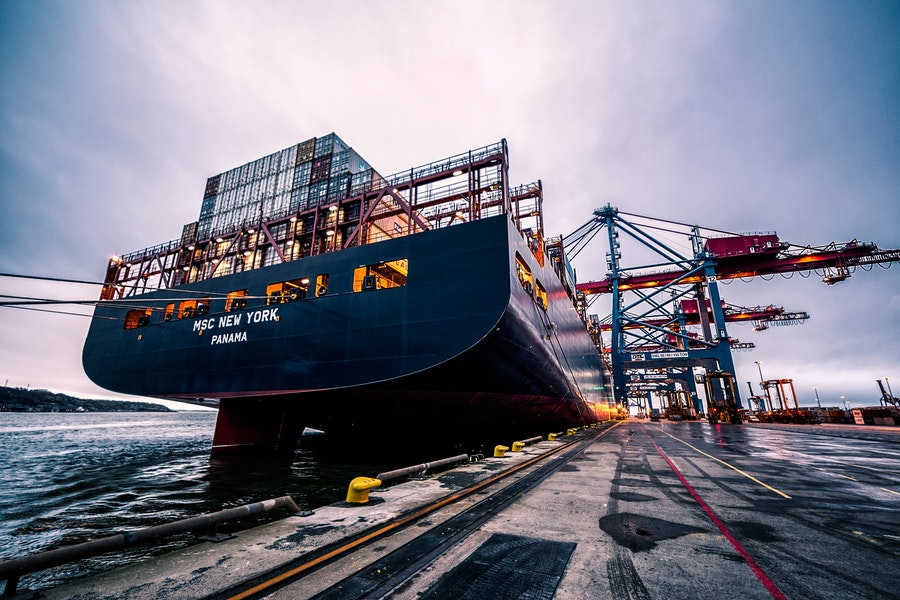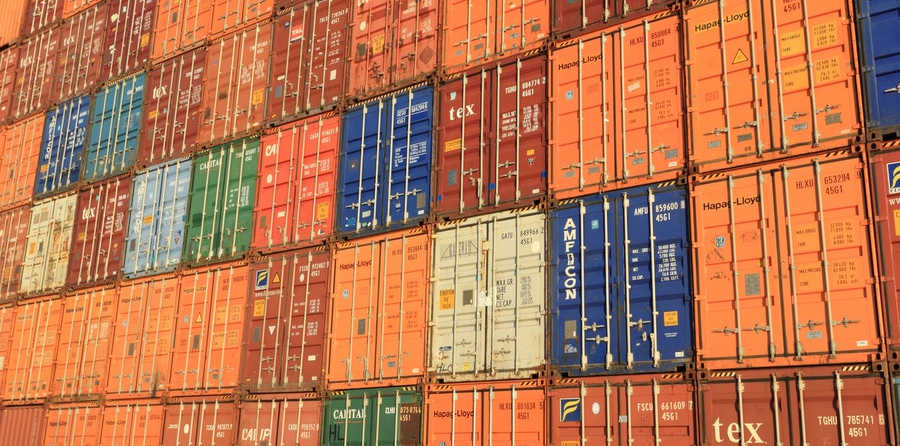Companies whose consumers are demanding a more transparent supply chain regarding the origin of their products should not be surprised by global news reports about human rights abuses, climate change, and supply chain crises.
The results of recent research indicate that 60% of fashion shoppers want more information about the ingredient supply chains of the fashion brands that they purchase. According to a study by the British Beauty Council, eighty-six percent of beauty shoppers want more information about the ingredient supply chains of the beauty brands that they purchase.
 Understanding the definition and practical implications of “supply chain transparency,” along with recognizing the unique challenges faced by international manufacturing companies in upholding it, is crucial. Even more vital is acknowledging the initiative’s significance and benefits, warranting the need for companies to invest in it.
Understanding the definition and practical implications of “supply chain transparency,” along with recognizing the unique challenges faced by international manufacturing companies in upholding it, is crucial. Even more vital is acknowledging the initiative’s significance and benefits, warranting the need for companies to invest in it.
What is a Transparent Supply Chain and Why is it important?
Supply chain transparency is a method of managing the supply chain in which all aspects of a company’s supply chain, including suppliers of their products, the processes used to produce the product (including labor), and the results of the production are transparent.
The aim is to improve efficiency and sustainability by promoting accountability, reducing risk, and reducing costs. Usually, this is accomplished through the use of technology, such as blockchain and other digital tools, that enable all stakeholders to access and verify information in real time.
The importance of a transparent supply chain can be attributed to the fact that consumers need to be aware of the quality, safety, and origin of the products they purchase. In addition, they should be informed of the labor practices used in their production and their overall environmental impact.
 A supply chain that is part of an international supply chain, such as that originating from countries such as China or Mexico, requires a higher level of transparency. It is often difficult to track and verify the origins and quality of raw materials, components, and finished products in these situations, as there is often a complex network of suppliers and manufacturers involved. In addition to ethical violations, environmental degradation, and inferior quality control, this lack of transparency can negatively impact a company’s reputation and bottom line.
A supply chain that is part of an international supply chain, such as that originating from countries such as China or Mexico, requires a higher level of transparency. It is often difficult to track and verify the origins and quality of raw materials, components, and finished products in these situations, as there is often a complex network of suppliers and manufacturers involved. In addition to ethical violations, environmental degradation, and inferior quality control, this lack of transparency can negatively impact a company’s reputation and bottom line.
Therefore, it is imperative that businesses prioritize supply chain transparency when dealing with international suppliers and manufacturers in order to ensure that their products are compliant with regulatory requirements.
Manufacturing companies providing goods to consumers must maintain a transparent supply chain management system for a number of reasons:
Accountability: Companies are able to monitor their suppliers and ensure they are adhering to ethical and sustainable practices when they have visibility into all aspects of the supply chain.
Reducing risk: Knowing where products come from and how they are manufactured can help to reduce the risk of product recalls or legal proceedings.
Efficiency is improved: Companies are able to identify and address bottlenecks in their supply chain more easily with real-time data.
Enhanced reputation: Companies with transparent supply chain practices are often viewed more positively by the public and other stakeholders.
Increased innovation: Transparent supply chain management helps companies to identify and address challenges and opportunities that might not be currently visible in the supply chain.
Better customer trust: Consumers are becoming more concerned about the environmental and social impact of the products they purchase. Transparency in the supply chain contributes to the development of customer trust and credibility.
According to the Harvard Business Review: “Transparent supply chains also reduce reputational risk and enhance the company’s standing as a trustworthy enterprise. Patagonia and Nike have very high rates of applications for their jobs as well as very low employee turnover, partly a result of their reputation as responsible companies.”
Achieving greater sustainability: By having visibility into the supply chain, companies can identify and address sustainability challenges, such as reducing waste and emissions. According to Forbes: “Transparency gives companies the ability to prepare for possible disruptions and react quickly when a situation occurs. This holds true whether the disruption is a single event, a seasonal peak in sales, or a pandemic like coronavirus. And, as a result, supply chain operators can respond to disruption faster than ever before.”

The Difference Between Supply Chain Transparency and Supply Chain Visibility
The terms “Supply Chain Transparency” and “Supply Chain Visibility” are often confused and should be distinguished. According to QIMA 1:
“Supply chain visibility is the business’s ability to see into operations at every tier of its supply chain, and to enable its supply chain stakeholders to share with each other all relevant information.
Meanwhile, while supply chain transparency is enabled by supply chain visibility, it represents the next step in information sharing, namely, offering manufacturing details of interest to the public.”
Challenges of Transparent Supply Chains
The implementation of transparent supply chain management practices is not without its challenges. Several obstacles must be overcome in order for companies manufacturing products overseas to sell in North America to achieve a truly transparent international supply chain, including a lack of data, technology limitations, and a resistance to change. The following are some of the challenges that may be encountered:
The lack of data and technology infrastructure: It can be difficult to monitor and verify information in certain parts of the supply chain due to a lack of data and technology infrastructure. Small or remote suppliers, for example, may not have the technology or infrastructure to collect and share information about their operations.
The use of paper-based systems for recording and managing information may be problematic for buyers as it can make accessing and verifying information about these companies difficult. In order to improve transparency and accountability in supply chains, these challenges highlight the importance of investing in technology and data management systems.
Unwillingness to Disclose Information: There may be resistance to change on the part of companies and they may also be unwilling to disclose sensitive information about their supply chain operations to their competitors or the general public. Manufacturing operations in China tend to maintain secrecy regarding their sourcing and production practices, making this particularly true.
According to the Harvard Business Review: “A key consideration is how much data to make publicly available, and in what degree of detail. Many firms have made bold assertions about how seriously they manage their supply chains. Transparency, at a granular level, gives credibility to those claims.”
Obtaining And Verifying Information: There can be a great deal of complexity involved in supply chains, as they are made up of a variety of players and operations. The process of obtaining and verifying information about all aspects of the supply chain can be challenging. As per Transparency One:
“Gaining visibility into your supply chains is a significant task that requires multiple stakeholders to work together towards a common goal. In a global and fast-moving environment, this becomes even more challenging.”
“The first way to address this is through clear, upfront, and collaborative communication. When approaching your suppliers, clearly communicate the context for the project, such as the need to meet a corporate sustainability objective, as well as the consequences of non-participation, such as the loss of business relationship.”
Investment Can Be Costly: Investing in technology, data management systems, and personnel can be costly when implementing Transparent Supply Chain Management. The true test of an organization’s commitment to Supply Chain transparency is not the data they publish online, but rather how much time and money they spend investigating these details, according to Basak Kalkanci, associate professor of operations at Georgia Tech.
“When we are talking about supply chain responsibility, ‘learning’ is really the centerpiece, because many buyers don’t know what’s going on with their suppliers,” Kalkanci says.
“When the learning cost is too high, a company might decide it’s not worth making the investment to find out what exactly their suppliers’ operations are like.”
 Transparent Supply Chains and China
Transparent Supply Chains and China
Companies in China are implementing transparent supply chain management practices. It should be noted, however, that the level of transparency varies from company to company and industry to industry. Over the past few years, consumers and regulators have increased pressure on companies to increase transparency in their supply chains. Many Chinese companies are working to improve their practices.
This is particularly important concerning import of cotton and tomatoes from the Xinjiang Uyghur Autonomous Region (XUAR) of China, which is currently banned by the U.S. Products manufactured in the region or produced by a specific list of entities are presumptively prohibited from entering the United States unless the importer can demonstrate “clear and convincing” evidence that the product does not contain forced labor.
As a result, the importer is assumed to be in violation unless he proves that the products are not tainted. Many of the brands American consumers are familiar with are produced in China by the entities whose products are barred.
As outlined in the U.S. Border Protection Operational Guidance for Importers released on June 13, 2022, importers will be required to provide extensive documentation detailing the supply chain from raw materials to finished product.
It is, however, challenging for companies in China to fully implement transparent supply chain management practices. According to QualityInspection.org:
“Most Chinese manufacturers routinely subcontract some of their production without informing their customers. They see this as a necessary rule of the game.
“More and more importers are aware of this risk and try to prevent it as quality often suffers and social compliance standards can’t be enforced. These days, all brands know the importance of transparency, and the companies doing final assembly (or cut & sew, in apparel) know they are watched.”
 Transparent Supply Chains and Mexico
Transparent Supply Chains and Mexico
As part of the USMCA (United States-Mexico-Canada Agreement), Mexico is committed to promoting supply chain transparency. The agreement contains provisions aimed at improving labor standards, protecting the environment, improving the transparency of customs procedures, harmonizing regulations, and resolving disputes between the three countries.
As a result of improving the business environment, reducing corruption, and providing a framework for resolving disputes, the USMCA contributes to improving transparency and accountability in Mexican supply chain operations. It is through this process that Mexican suppliers are able to enhance their reputation and attract more investment to the country, which in turn results in greater economic growth and the creation of new jobs.
By creating a stable, predictable, and transparent business environment, the USMCA enhances confidence in the Mexican supply chain, making it easier for companies to safely and ethically source products and materials from Mexico.
In an economic summit on global supply chains held last year, the United States and its trading partners reiterated transparency as a priority:
“We intend to promote transparency in consultation with the private sector, civil society, different levels of government, and other relevant stakeholders, consistent with Participants’ domestic laws and international obligations, in order to strengthen the resilience of supply chains. Civil society consultations, consistent with Participants’ domestic laws and international obligations, are an important part of transparency. We intend to advance information sharing, and to the extent possible common approaches and early warning systems, about potential, emerging, and systematic supply challenges. ”

Conclusion: Benefits for Consumers and Businesses
Both businesses and consumers will benefit from the development of transparent supply chain management. An organization’s reputation can be enhanced, customer trust can be increased, and risks can be reduced through improved visibility and accountability of supply chain operations. At the same time, consumers benefit from knowing that the products they purchase have been produced in a responsible and sustainable manner.
Transparency in the supply chain goes beyond just ethical considerations, as it also increases efficiency, reduces costs, and enhances competitiveness. The adoption of transparent supply chain management practices will drive further innovation and improvement in the industry, ultimately leading to a more sustainable and responsible global supply chain.
In spite of the challenges associated with implementing transparent supply chains, companies should not be discouraged from pursuing this important goal. Organizations can overcome these challenges and reap the benefits of a more transparent and responsible supply chain with the right investment and commitment.
About the Author: Michael Dillon is the Vice President of Marketing & Business Development for NovaLink, a nearshore manufacturing company.



